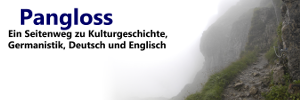Literary Theory: Major Approaches
Positivist biographical approach
- Which aspects of the author’s life are important to understand the text?
- Does the text simply mirror experience or does he transform it?
- What is this image of the world meant for? What is its function for the writer / reader?
- Is the difference between reality and fiction due to aesthetic reasons or psychological reasons?
Psychoanalytical approach
- What do the images and conflicts in the text tell you about conflicts in the author’s psyche?
- What made the author write fiction? What were his / her motives?
- What do we learn about ourselves reading the text?
New Criticism
- What is the major topic in the text?
- Do all elements of the text contribute to the topic or is there something that doesn’t seem to fit at all?
- How do content and form work together to create unity?
Structuralism
- What basic oppositions do you find in the text (e. g. male – female, light – darkness)? How are they related to each other?
- What are the most important elements in the story? What is their function?
- How to they fit into the context of the genre?
- How does the world created by the text fit together with how we see the world?
Deconstructivism
- Where do basic oppositions in the text (e. g. black – white, old – young) become shaky?
- Where do you find contradictions?
- Where do you find shifts in perspective that disrupt the main point of the story?
- Where do you find gaps in the story? What do they mean?
- Where do you find references to other parts of the text or to other texts? Do they change the meaning of the text?
Marxism
- What is society in this period of history like?
- What is the author’s position towards society?
- What position towards society is presented by the text?
- Does the text present economic or social conflicts?
- What seem to be the most important issues? Are the characters aware of them?
New Historicism
- At the time of writing, what seems to be important in art and everyday culture? Who defines what is important? How did they do that?
- How does the text reflect these things, how and by whom they are made important?
-
How do other texts reflect the relationship between art and culture?
Feminism, Gender Theory, Queer Theory
- At the time writing, what does it mean to be male / female / lesbian / gay?
- What does it mean for writing and reading?
- How are males and females, gays or lesbians presented in the text?
- Does the text address males / females / gays / lesbians in a specific way?
- How do female / male / gay / lesbian readers react to this text and to gender-specific literature in general?
Postcolonialism
- At the time of writing, how did people react to different cultures, races, genders, and classes?
- How are people from different cultures portrayed in the text?
- Does the author follow the rules of the dominant culture? Does he make his own way of writing?
Reader-response criticism
- What do you expect from this text?
- What is left unsaid? How does it relate to what is told?
- How do you respond to the information in the text and how do you react to the gaps?
- How do your ideas about the text change while you are reading?
- Why do you respond in a certain way?
Reception theory
- At the time of writing, what do people expect when they get themselves a book?
- How does this text fit into this framework of expectations?
- What is taken for granted in the text and what has to be explained?
- How did readers and writers actually respond to the text? Why?
- How do the interpretations of the text change over time? Why?
